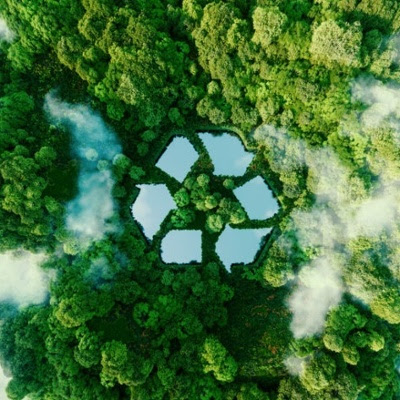WOBO is pleased to support and share the activities of ICC with its membership.

The International Code Council Celebrates World Water Day
World Water Day is an annual campaign that raises awareness of the global water crisis by advocating for the sustainable management of freshwater resources. For decades, the Code Council’s codes and standards have addressed water-related issues, and the organization remains committed to working with member jurisdictions and industry partners to bring water-efficient products to market, help new homes and structures become more water-efficient, and spread the word about the need for improved water conservation. – Read More
-Mar-19-2024-03-43-02-6696-PM.png?width=540&upscale=true&name=Untitled%20design%20(3)-Mar-19-2024-03-43-02-6696-PM.png)
Hydrogen Fuel Generation, Distribution & Usage: What You Need to Know
Hydrogen is gaining popularity as a fuel source due to its clean and renewable properties, offering a promising alternative to traditional fossil fuels.
In this article, we will break down some key insights about hydrogen, encompassing its generation, distribution and beyond. We’ll examine prominent hydrogen initiatives in both Australia and North America, while also delving into some of the collaborative efforts expected to yield innovative solutions on the horizon. – Learn More
How is Hydrogen Fuel Generated?
The methods for hydrogen generation can greatly vary, resulting in variable costs and environmental impacts depending on these differences.
The U.S. Department of Energy (DOE) identifies that “the primary challenge for hydrogen production is reducing the cost of production technologies to make the resulting hydrogen cost competitive with conventional transportation fuels”.
-1.jpeg?width=1140&upscale=true&name=GettyImages-1448335035%20(2)-1.jpeg)
Using Codes and Standards as Solutions for Global Sustainability and Resilience Objectives
Here we discuss the United Nations Sustainability Goal 6 and the 28th iteration of the Conference of Parties (COP28) and how the Code Council is uniquely placed to consider the challenges facing the building safety industry and lead global collaboration towards building safety solutions. Read More

Shaping the How, When and Where Of Sustainable Water Practices
The Plumbing, Mechanical and Fuel Gas Code Action Committee’s Water Reuse Working Group is currently developing new proposals for the 2027 International Codes® that include rainwater, greywater and blackwater reuse.
Water is one of our most precious resources, but with the changing climate and growing demand, water scarcity has become a growing concern. The U.S. Environmental Protection Agency has a long list of ways that households inadvertently use more water than they should, amounting to billions of gallons in waste every single year.
Behavioral changes like turning the water off while brushing your teeth or only running a full dishwasher load can help, but they may not move the needle long-term. For real change, and to ensure that water remains a sustainable resource as the global population increases, people need to reevaluate how water is used and how it may be reused.
“There are only so many gallons of water on Earth,” said Adam Stern, Vice President, Natural Systems Utilities (NSU), which designs, builds and now operates dozens of water reuse systems. . “Each is reused again and again. We drink water that was once mist in a rainforest, in a toilet, in a blueberry or in a dinosaur’s eyeball – or all of these. Reuse is reality. But the rate at which humans now use water shortens the reuse cycle and exceeds the rate at which Earth’s natural cleaning mechanism functions. Therefore, safe reuse now often requires additional input and effort to render water safe for consumption. And as the reuse cycle continues to accelerate with human population growth, so too will the need for appropriate stewardship of Earth’s limited water.” Read More

Amazon’s Second Headquarters Highlights Water Reuse and Code Safety in Arlington
Amazon’s HQ2 was built from the ground up to provide a green working environment, and that includes one of Virginia’s most extensive water reuse systems. For all practical purposes, HQ2 was built in accordance with the International Plumbing Code®
Amazon had ambitious plans for its second headquarters in Arlington, Virginia. Known as HQ2, the company wanted to build Metropolitan (Met) Park to be an incredibly sustainable campus with zero operational carbon emissions. It also strived for LEED Platinum certification and, as a result, recently became the world’s largest LEED v4 project for Building Design and Construction. Better still, Amazon saved more than 14,700 metric tons of carbon (the equivalent of the carbon produced by 3,200+ cars annually) through a 20 percent reduction in the carbon footprint of Met Park’s concrete structures. – Learn More

Exploring the 2023 Edition of ICC 300 Standard
The 2023 edition of the ICC 300 Standard has been completed and is now referenced in the 2024 International Codes®. The standard addresses all aspects of tiered seating associated with bleachers, grandstands, and folding and telescopic seating.
The 2023 edition of the ICC 300 Standard for Bleachers, Folding and Telescopic Seating and Grandstands has been completed and is now referenced in the 2024 International Codes® (I-Codes).
On February 24, 1999, the Bleacher Safety Act of 1999 was introduced in the House of Representatives. The bill, which cites the International Code Council and the code, was issued in response to concerns relative to accidents on bleacher-type structures. As a solution, the bill authorized the U.S. Consumer Product Safety Commission (CPSC) to issue a standard for bleacher safety as well as develop and revise the Guidelines for Retrofitting Bleachers.
The International Code Council Board of Directors decided that a comprehensive standard dealing with all aspects of both new and existing bleachers was warranted and authorized the formation of the Code Council Consensus Committee on Bleacher Safety (IS-BLE). Learn More

Increasing Affordable Housing Stock Through Modular Building
After providing an overview of the affordable housing shortage in the United States, this report describes modular building, its benefits and its potential to alleviate the affordable housing crisis—particularly in the multifamily housing space—and the barriers that need to be addressed in order to bring modular building to scale. Read More
